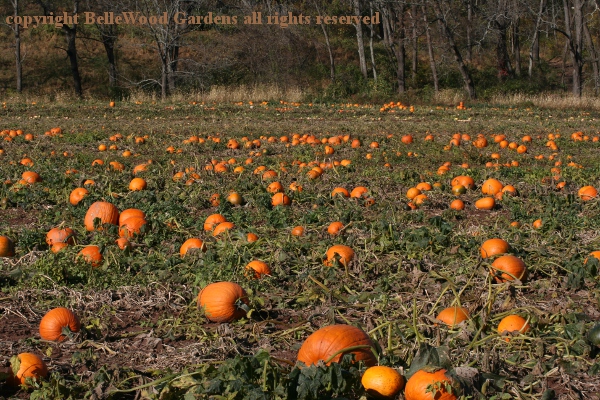
.
If you have any comments, observations, or questions about what you read here, remember you can always Contact Me
All content included on this site such as text, graphics and images is protected by U.S and international copyright law.
The compilation of all content on this site is the exclusive property of the site copyright holder.
Pumpkin Time
Wednesday, 31 October 2018
It's that time of year. What time? Why, pumpkin time of course.

"When the Frost is on the Punkin" as James Whitcomb Riley
so aptly put it in his poem. The frost has kissed and damaged
the leaves, but the golden pumpkins in this field are still sound.
What to do with pumpkins . . .
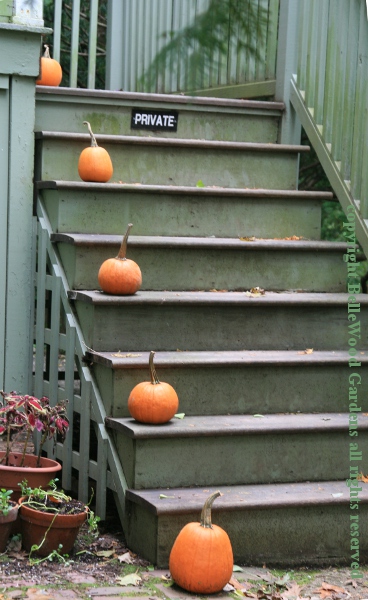
Line them up on the steps.

Artfully carve them into something more
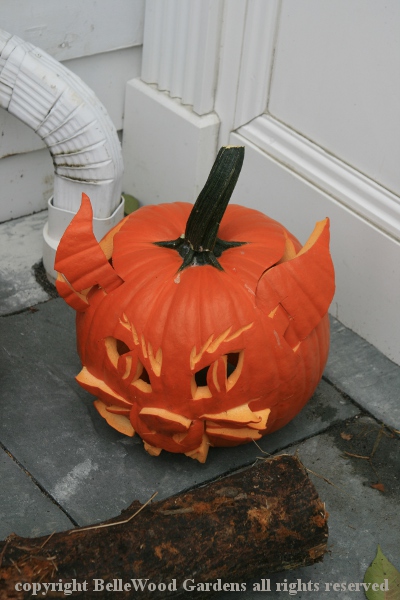
than a Jack o'lantern. Kitty cat, I think?
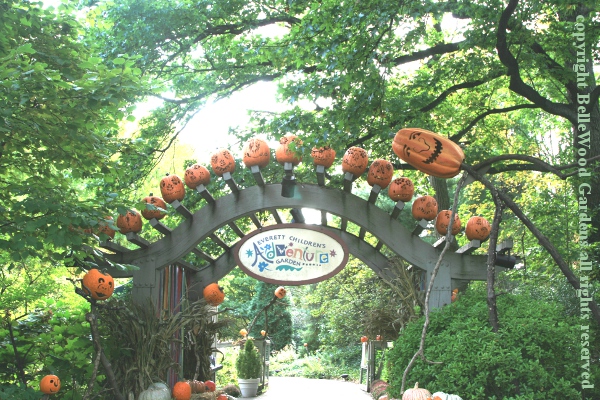
The New York Botanical Garden goes all out with spooky pumpkins.
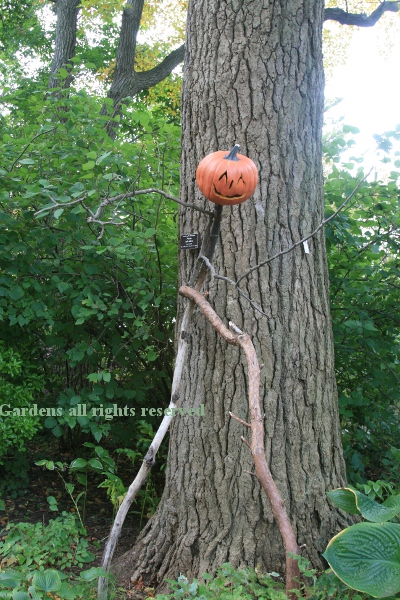
They stride across the landscape of the
Everett Children's Garden. Some even lurk
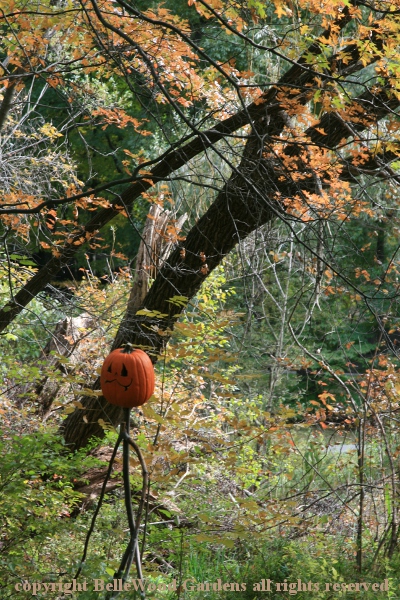
in the shrubbery, camouflaged in autumn foliage.
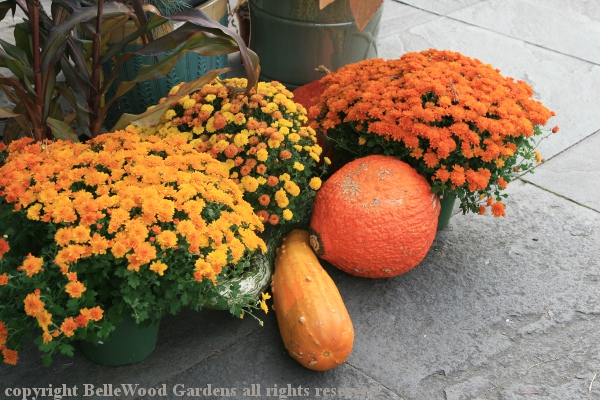
They color coordinate winter squash with chrysanthemums.
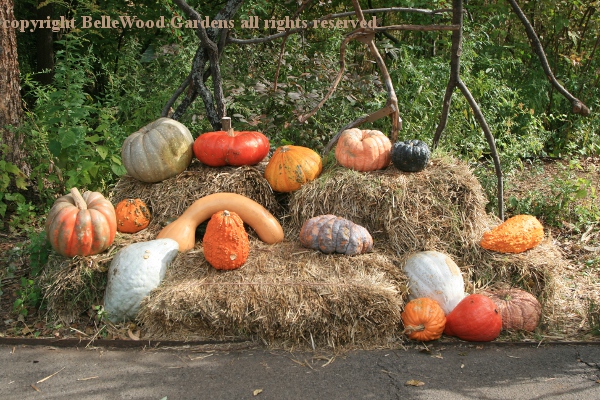
A diversity of winter squash and pumpkins lounge on hay bales.
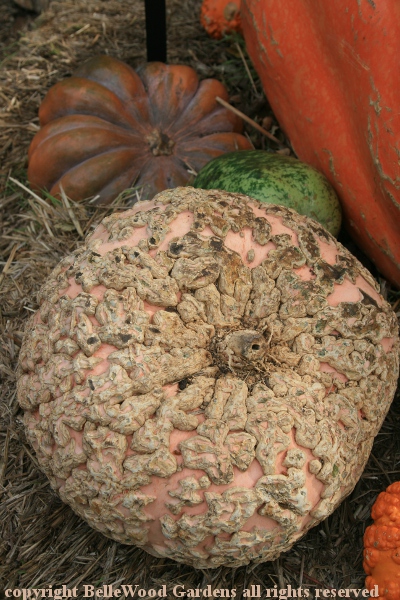
Some are even identified, like this strange, warty peanut pumpkin, Cucurbita maxima 'Galeux d'Eysine'. The fruit's sugars leak out, then harden on the surface, covering the pumpkin's pinkish skin with beige, peanut-shaped bumps. An heirloom variety, it has very sweet, fiberless, bright orange flesh. Use in soups, preserves, or pies. Roast or bake, but avoid boiling or steaming the moist flesh.
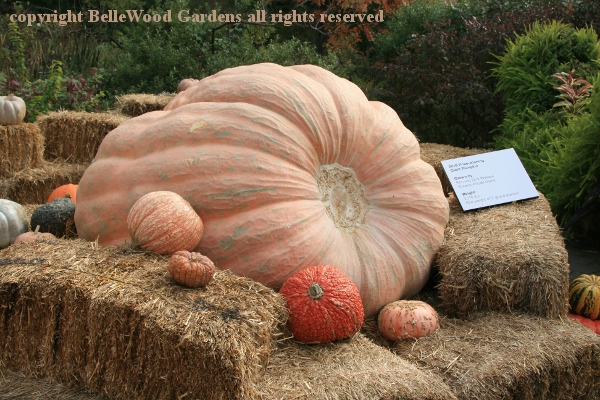
The New York Botanical Garden also displays enormously gigantic, extremely supersize pumpkins. This behemoth, the 2018 prize-winning giant pumpkin weighed in at 2,283 pounds. Grown by John Barlow and Caleb Jacobus of Gays Mills, Wisconsin, that's the weight of two polar bears.
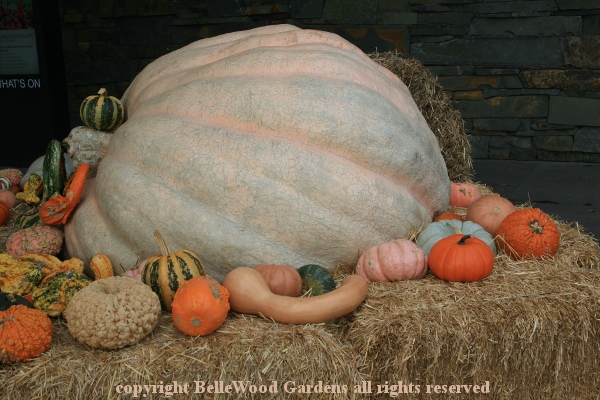
Arranged in collaboration with the Great Pumpkin Commonwealth, they also have on display the largest pumpkin ever grown in North America, actually the largest pumpkin in the world. Grown by Steve Geddes of Boscawen, New Hampshire, it weighs 2,528 pounds. That's the equivalent weight of two grizzly bears.
What do you do with a pumpkin of this size? Well, apparently you don't eat it. The flesh is bitter, and very fibrous. It would have to be, to support itself. And even so, look how it flattens out on the bottom. You can feed it to your pigs (if you have any pigs, that is.) Deer will eat it.

Image courtesy City of Tualatin, Oregon, Parks and Recreation Department
And, apparently, you can carefully cut the top, hollow it out, and use it as a boat! The City of Tualatin, Oregon, features a Pumpkin Regatta every year. Heidi Marx, event specialist for the City of Tualatin Parks and Recreation Department told me that "The biggest pumpkins don't always make the best boats as they can hard to move. We did however have the largest pumpkin ever paddled this year. It was grown by Steve Daletas and weighed 2003 pounds!"
If you want to eat a pumpkin (which is a type of squash) you're better off with a winter squash.
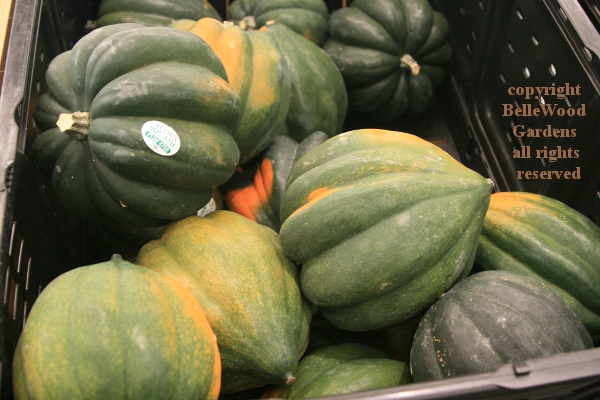
Acorn squash is readily available, has a nice flavor and is a good size for two people. Cut in half, scoop out the seeds. Bake cut side down in a 350° Fahrenheit oven for 30 minutes. Turn cut side up. Add some butter, a little brown sugar or a splash of maple syrup, maybe a dusting of cinnamon, or some nutmeg and cardamom. Bake for 20 minutes longer. Then enjoy.
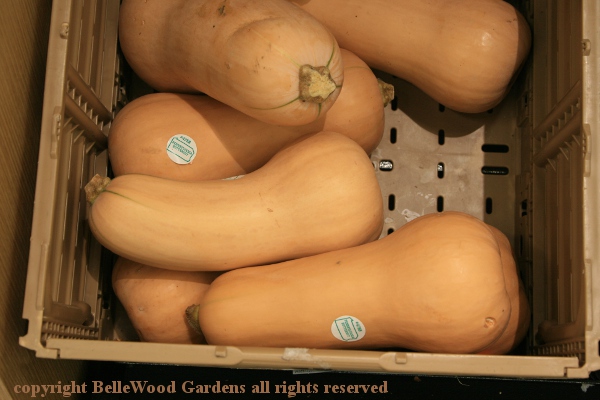
Popular butternut squash are also easy to find at this time of year. Prepare by cutting off the very top, and the bottom. One way to prepare is cut in half, top to bottom. Scoop out the seeds, brush the cut surfaces with oil, then bake in the oven. When done, scoop out the sweet, nutty flesh and use the puree as a vegetable, for soup, or baking muffins.
Not that difficult but more involved: after removing the very top and bottom cut a butternut squash apart - not vertically but where the thick "neck" portion begins to swell. Stand on cut end, and peel. The neck is solid, the bottom is where the seed cavity will be found. After peeling, cut the bottom in half vertically and remove the seeds. Now the ready-to-cook butternut squash can be cubed for roasting. Toss with some oil, a little salt and freshly ground black pepper, thyme or rosemary for a savory addition. Or, use some cinnamon, nutmeg, ginger and cloves for "pumpkin spice" flavoring. Then roast, uncovered, until lightly caramelized.
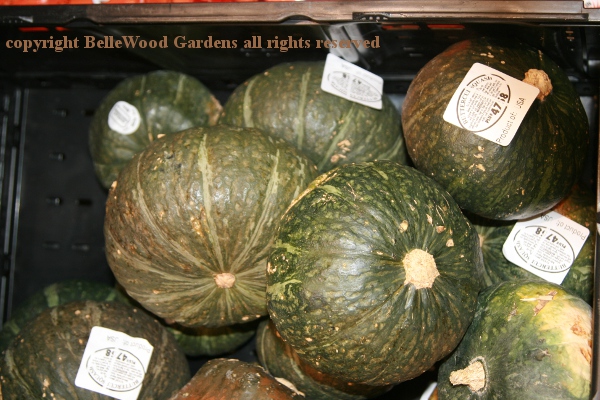
Buttercup squash is yet another easy to find winter squash that may
easily be steamed, roasted, or baked, then mashed or puréed.
But that's not all. As well as treating these winter squash as a vegetable
you can think of them as a fruit, and make them into preserves. Which is
what Joyce Goldstein recommends in her lovely book, Jam Session.
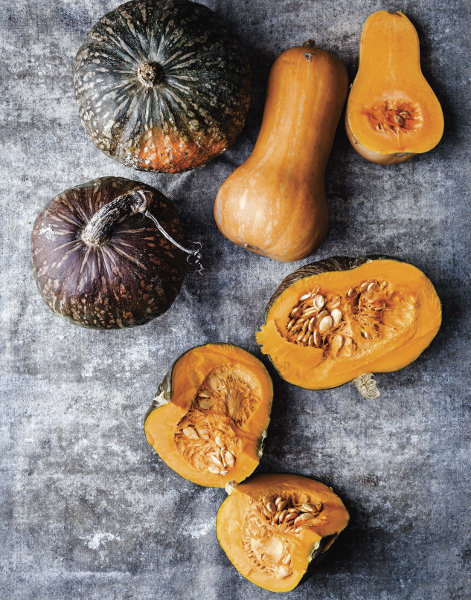
reprinted with permission from Jam Session, copyright 2018 by Joyce Goldstein.
Published by Ten Speed Press, an imprint of Penguin Random House LLC
Photography copyright Ed Anderson. Look here to purchase a copy.
Winter, late November through March offers three recipes for pumpkins and winter squash: roasted pumpkin butter, which she suggests enjoying on toast, pancakes, or in place of canned pumpkin for a pie filling. Mediterranean style pumpkin preserves are similar to spoon sweets, from Turkey or Greece. But we might spoon it over rice pudding or ice cream. And a Spanish preserve, cabello de angel, grated winter squash preserve to be used as a pie or tart filling.
Just think of the options - holiday ornament, competitive gardening,
various culinary possibilities - even boating. It's Pumpkin Time!
Back to Top
Back to October 2018
Back to the main Diary Page